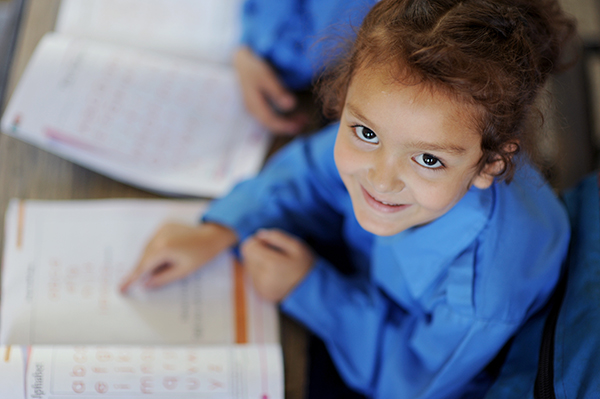
A principios de este siglo, la comunidad mundial se unió para apoyar ocho objetivos de desarrollo., ser logrado por 2015. Uno de esos objetivos abordaba las necesidades educativas en todo el mundo., y pidió 100 Millones más de niños leerán a finales de este año. 2015.
Este objetivo dio forma a la programación de numerosas agencias oficiales de desarrollo., más notablemente la Agencia de Estados Unidos para el Desarrollo Internacional (USAID). Durante la última década, los programas educativos de USAID se han centrado en mejorar los programas de lectura en los primeros grados en todo el mundo., y han tenido importantes impactos. En muchos países el proceso de enseñanza de la lectura ha mejorado significativamente. Y aunque todavía se están recopilando cifras exactas, es seguro decir que hoy, como resultado del apoyo del programa USAID, al menos 70 Millones de niños que de otro modo no habrían tenido la oportunidad han aprendido a leer..
Pero la educación no se trata sólo de leer, y la educación no se detiene una vez que los niños aprenden a leer. Como cualquier habilidad, hay que practicar la lectura. Y la lectura por sí sola no es suficiente para ayudar a los niños a desarrollar las habilidades necesarias para la vida.. Los niños deben aprender a utilizar la lectura y otros conocimientos y habilidades para encontrar y conservar empleos., entablar relaciones saludables con los demás, participar plenamente en la vida de su comunidad y sociedad, y pensar críticamente sobre lo que leen.
La semana pasada en las Naciones Unidas, La comunidad global se reunió nuevamente para establecer un conjunto de objetivos de desarrollo sostenible que se basan en lo que ya se ha logrado.. Convocatoria de metas sostenibles orientadas a la educación, entre otras cosas, para el aprendizaje permanente. En otras palabras, Piden que los niños sigan aprendiendo más allá de los primeros grados o la escuela primaria..
El la investigación demuestra que cada año adicional de escolarización de calidad tiene un impacto significativo en las perspectivas futuras de un niño. Sin embargo, demasiados niños abandonan la escuela a principios de su carrera académica.. Decenas de millones de niños, incluidos muchos que han pasado por algunos grados de la escuela primaria y que pueden haber aprendido a leer, Abandonar. Las razones son variadas, incluyendo la necesidad económica, seguridad o protección, discriminación de género, o simplemente falta de espacios en la secundaria.
Los niños que han abandonado la escuela tienen más probabilidades de estar desempleados, unirse a pandillas, participar en conductas delictivas, amenazar la seguridad del país donde viven, o convertirse en amenazas a la seguridad global. Están lo suficientemente alfabetizados como para unirse a organizaciones extremistas violentas y convertirse en amenazas a la paz global..
Mientras los países donantes consideran formas de incorporar los nuevos objetivos de desarrollo sostenible en sus programas de asistencia al desarrollo y ayuda exterior, esta es una gran oportunidad para pensar diferente sobre el apoyo a la educación.
Mantener a los niños en la escuela al menos hasta el grado 10 Es fundamental para solidificar los efectos de la educación., y garantizar que los niños tengan los elementos fundamentales para vivir una vida sana y productiva. Para garantizar que lleguen el mayor número posible de niños., La comunidad mundial debe apoyar a los niños en la transición de la escuela primaria a la secundaria garantizando un número adecuado de escuelas., aulas y profesores. Hay que fortalecer la calidad de los docentes del nivel medio. Debemos garantizar que la educación secundaria sea relevante para los jóvenes., para ayudarlos a obtener beneficios, habilidades empleables, y la capacidad de navegar por la vida.
Si no lo hacemos, seguramente terminaremos con una generación de jóvenes descontentos que saben leer al nivel de la escuela primaria pero que no pueden hacer mucho más.. Los nuevos objetivos de desarrollo sostenible nos llaman a actuar ahora.
Jerrold Keilson es vicepresidente y director sénior de la división de educación de Creative